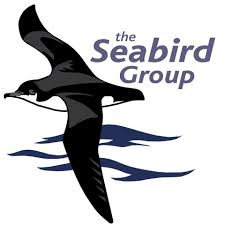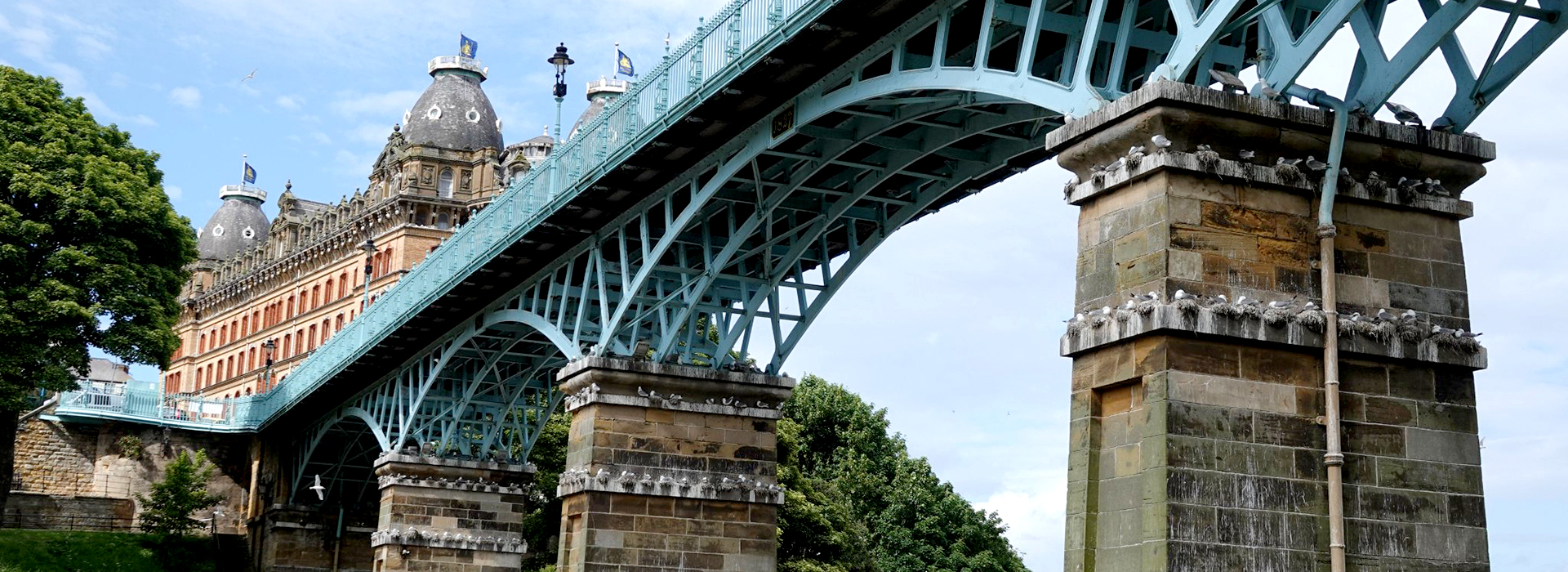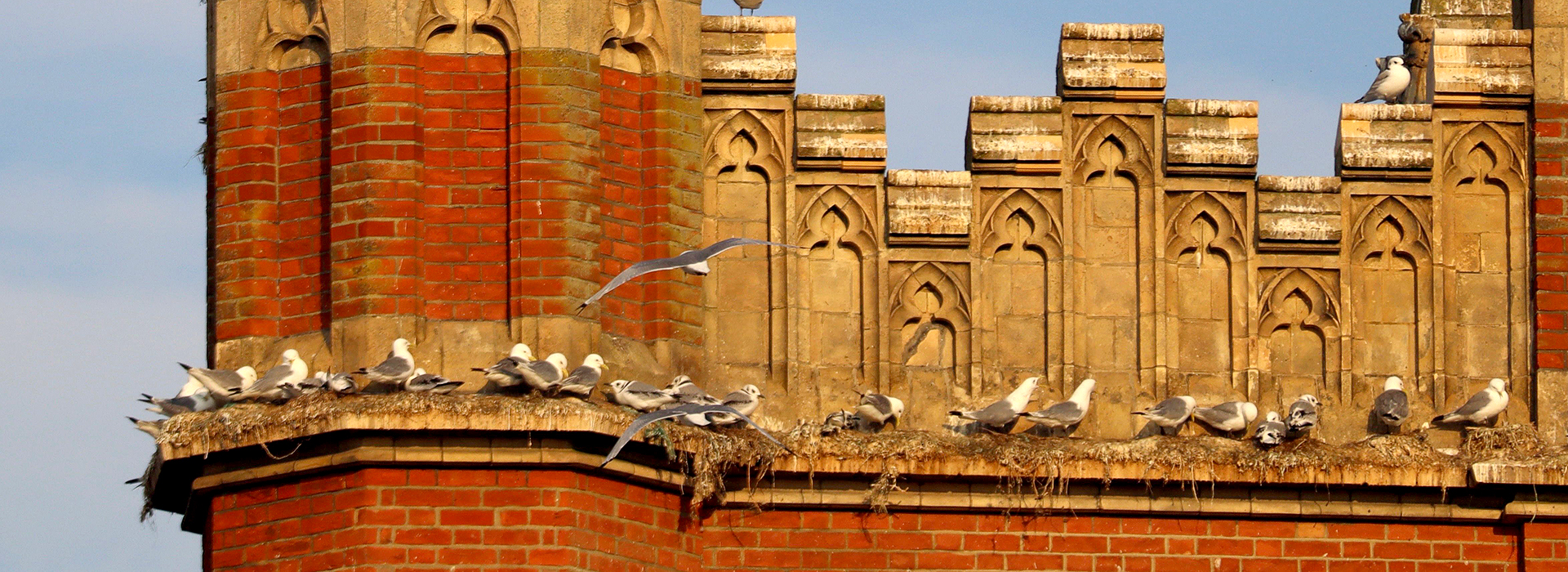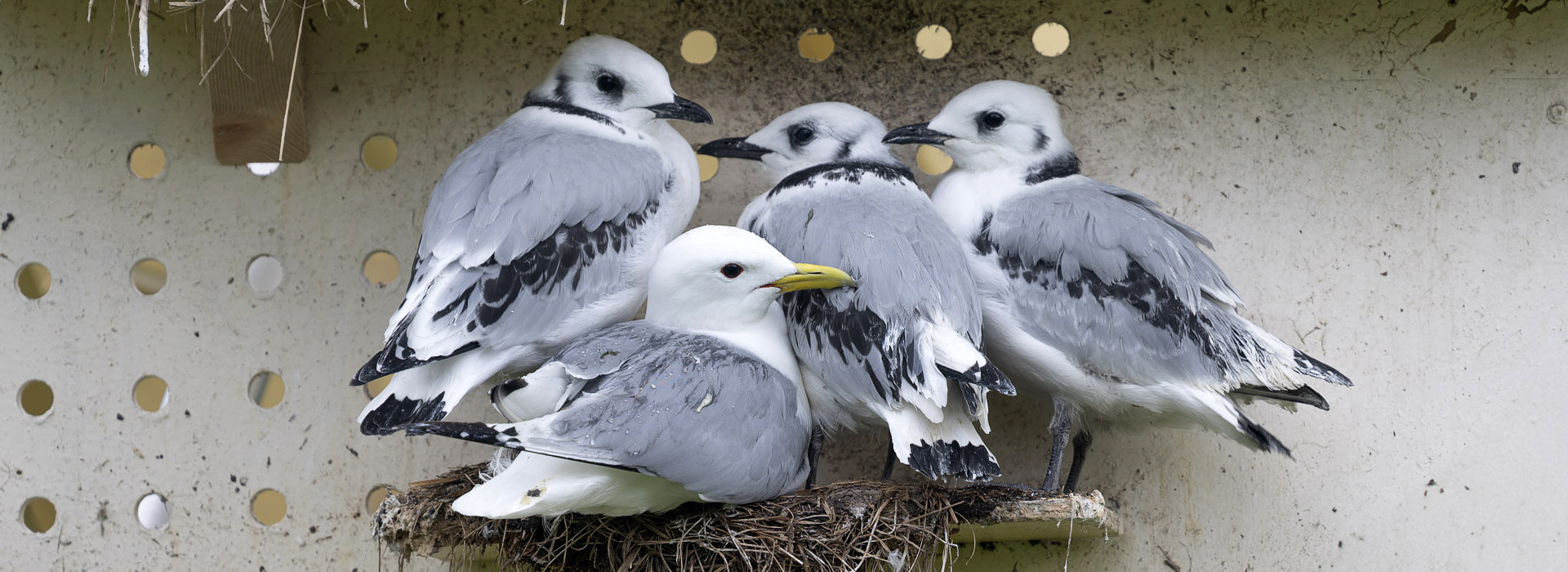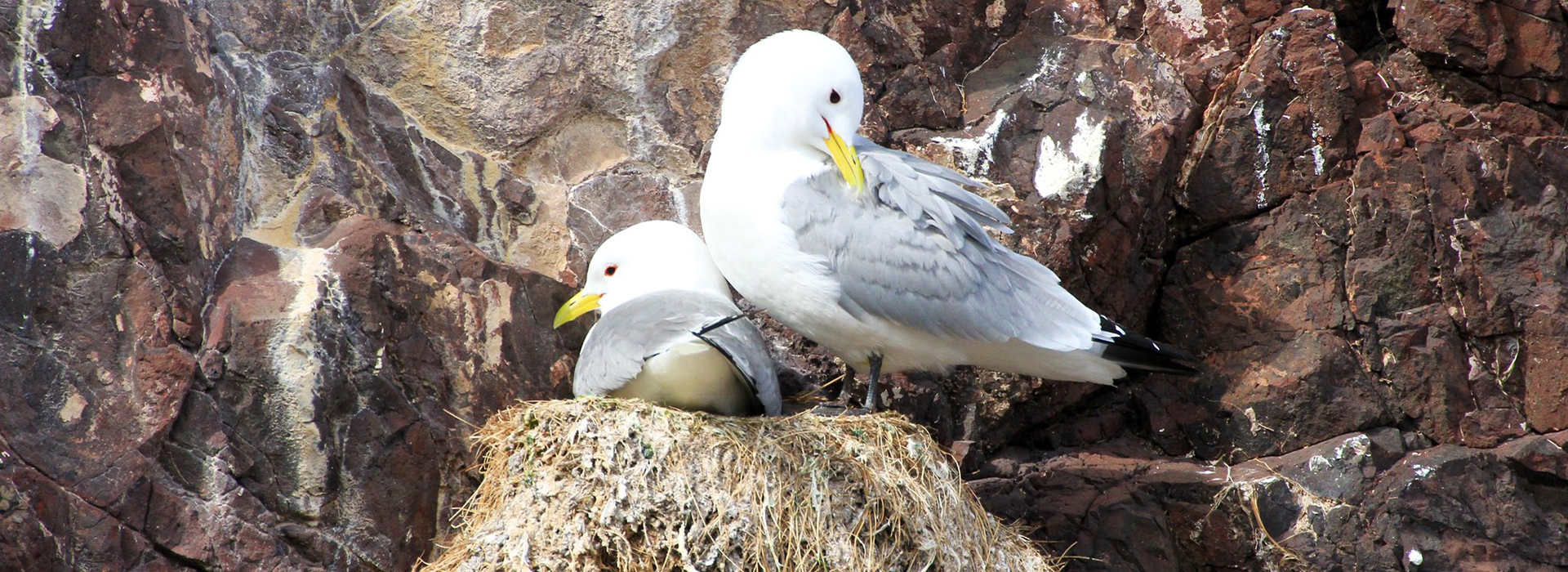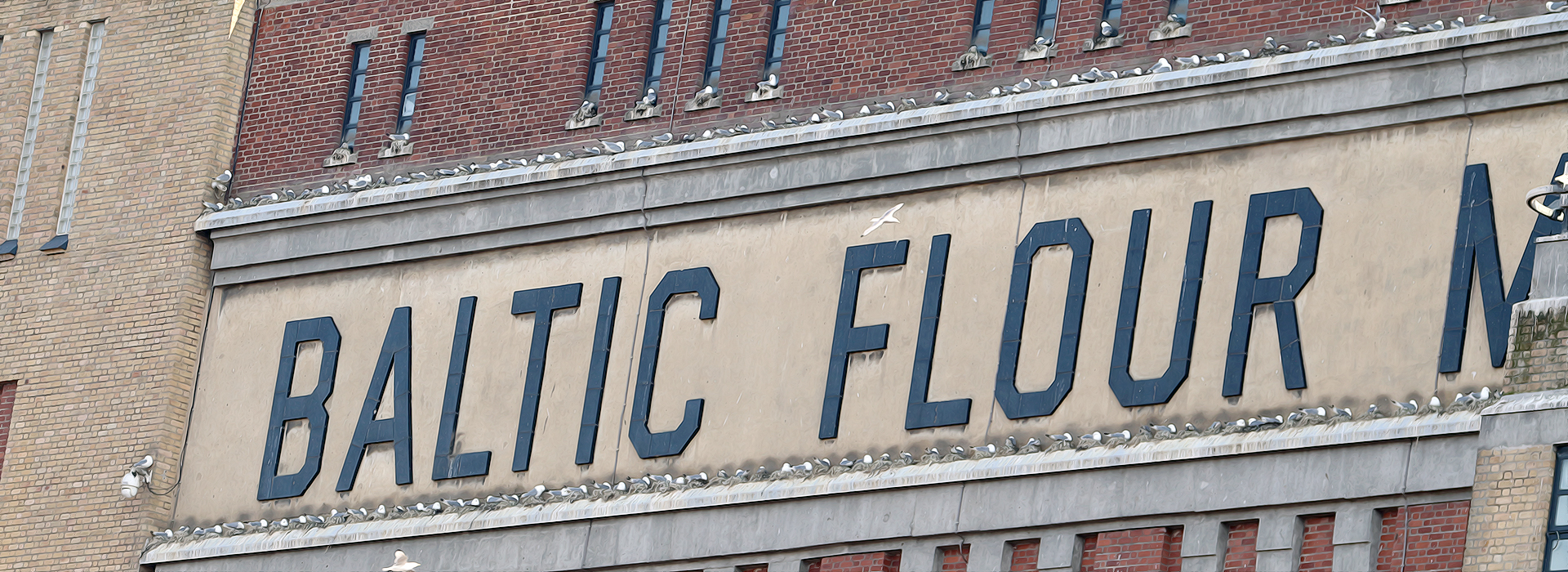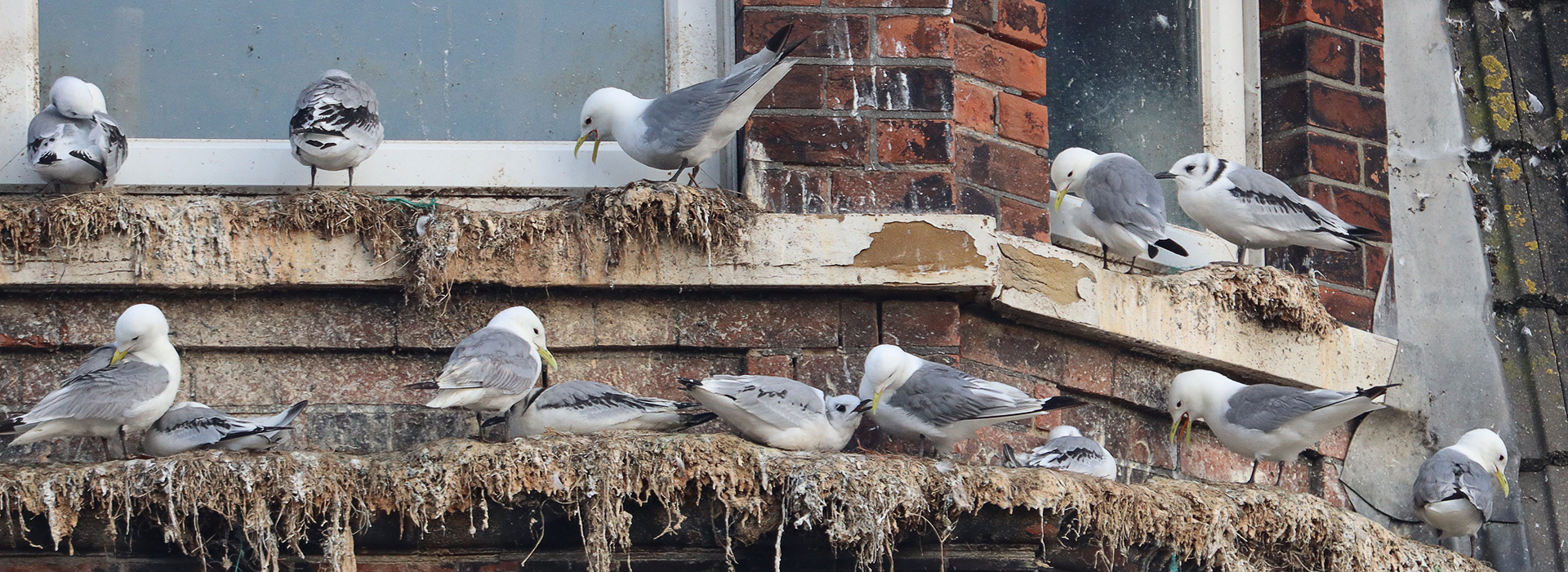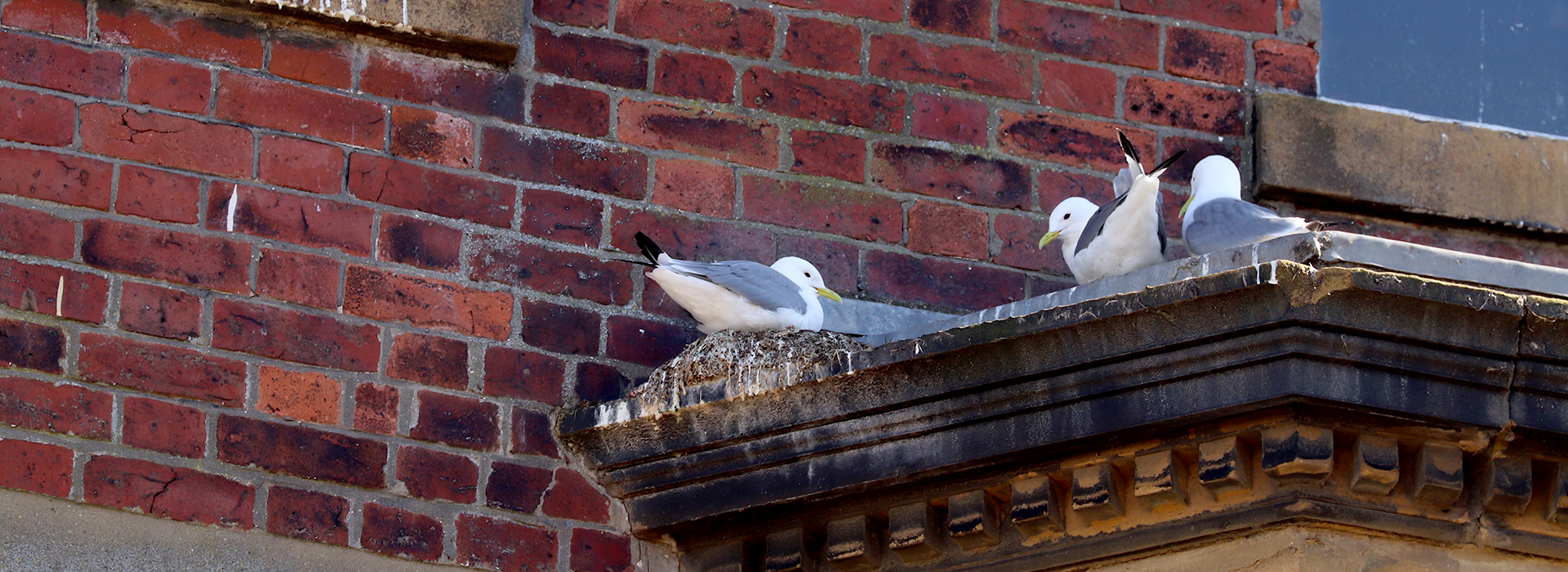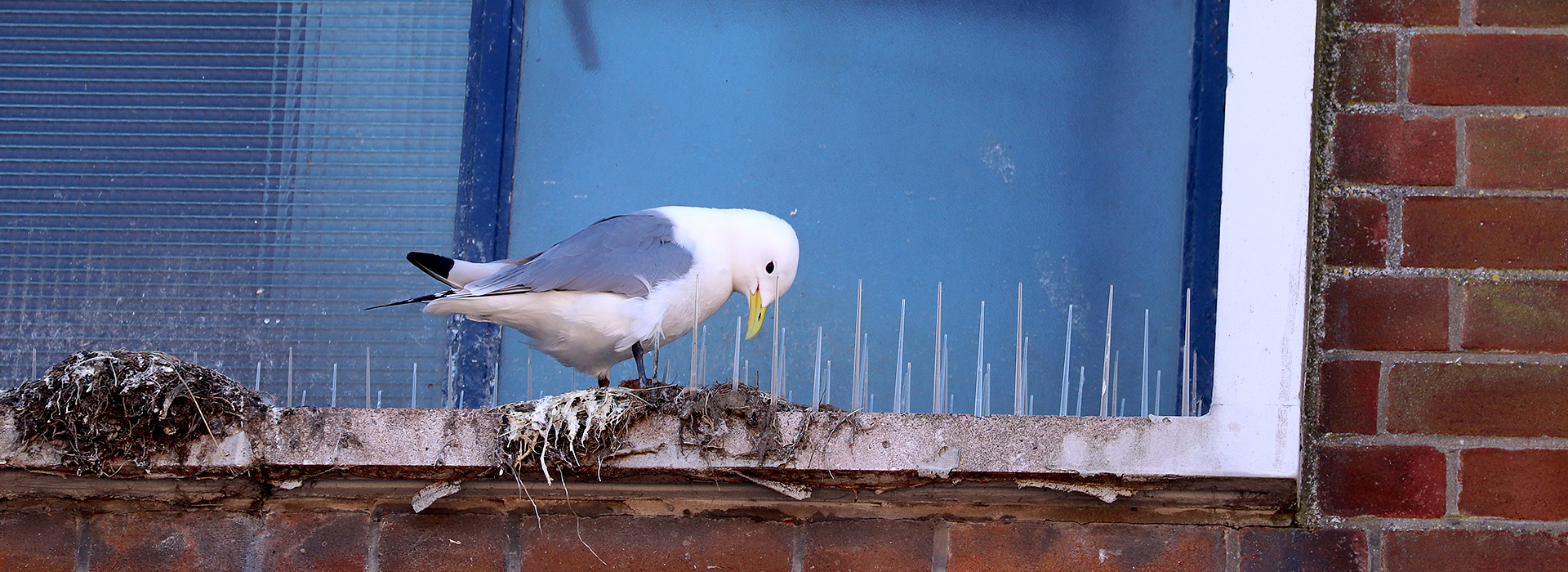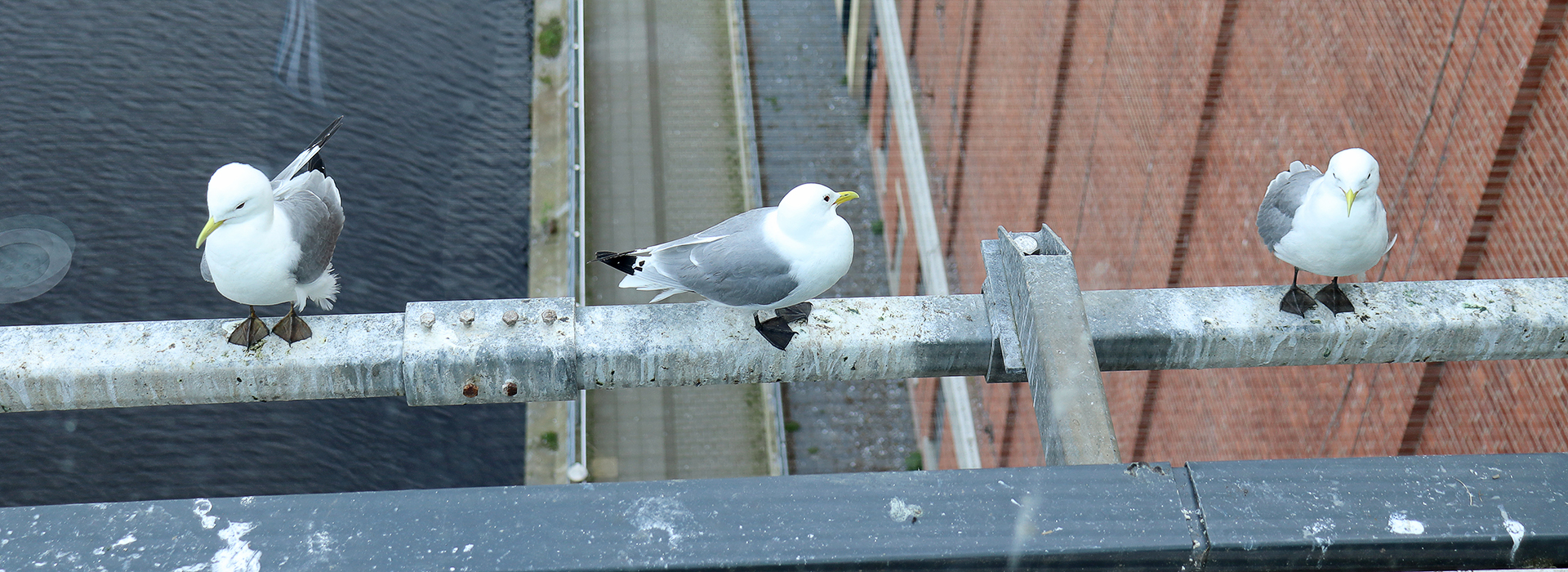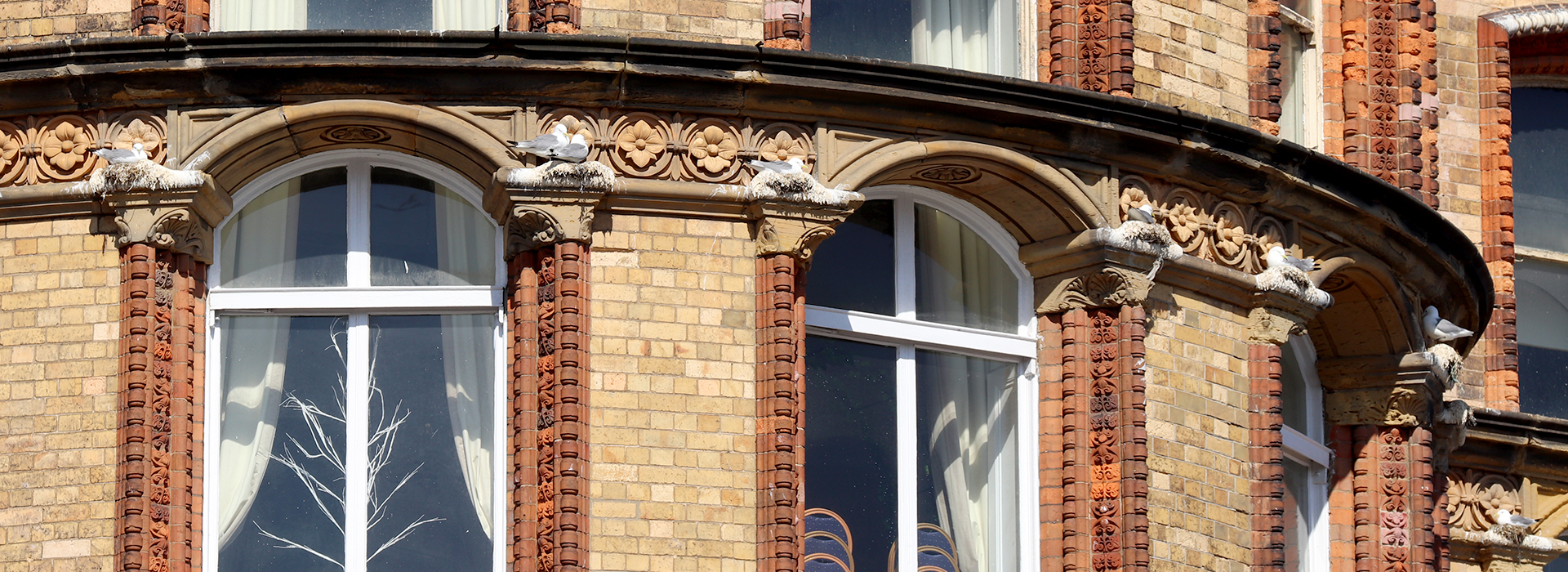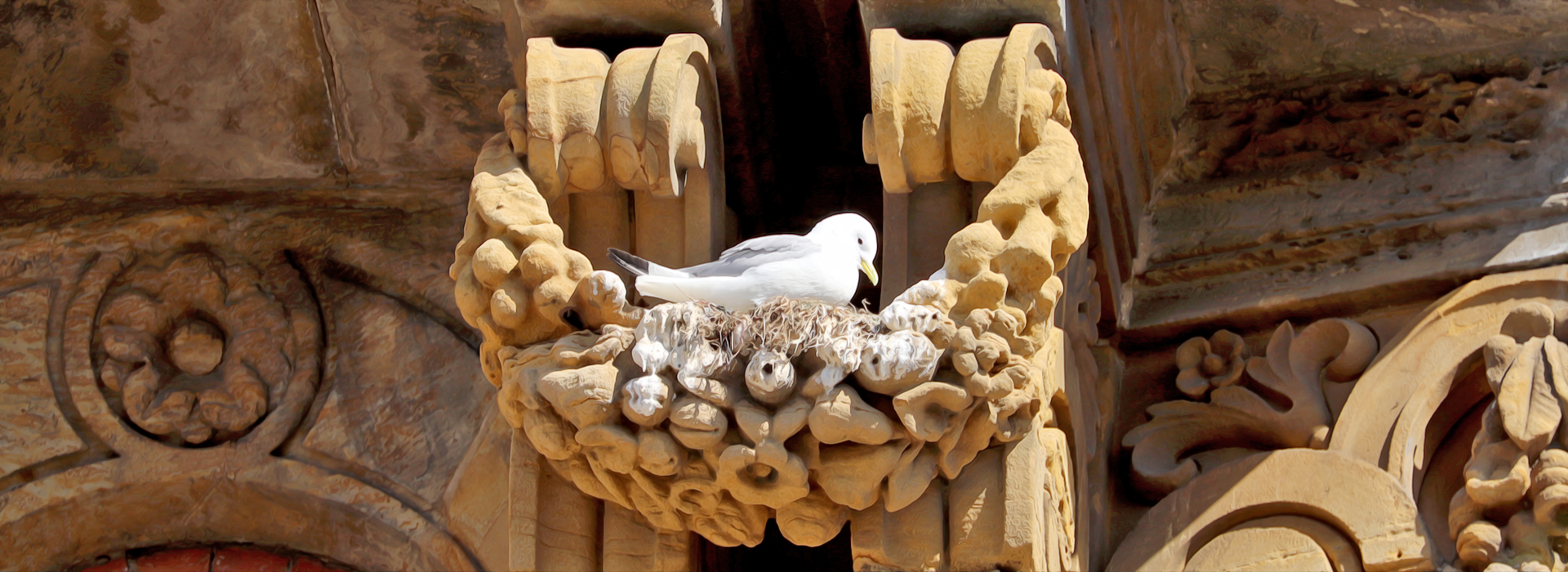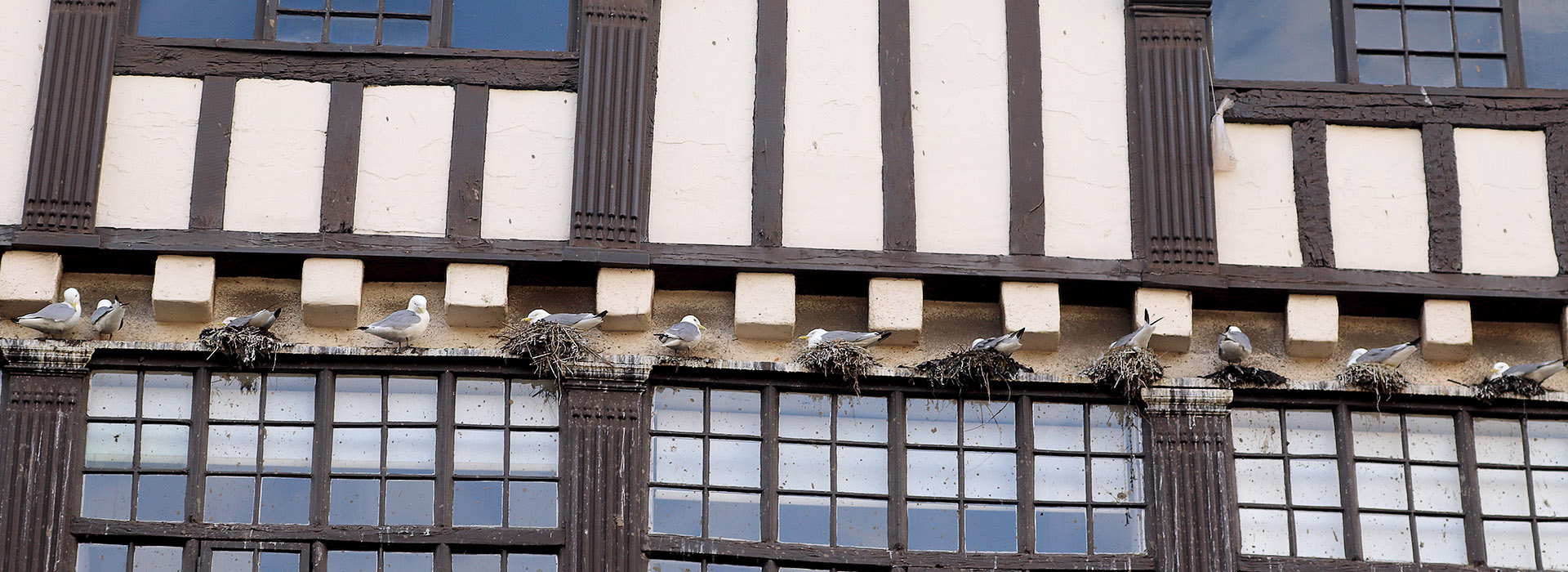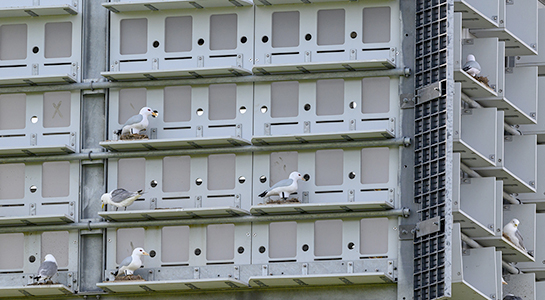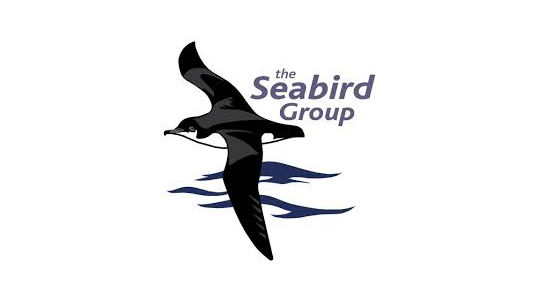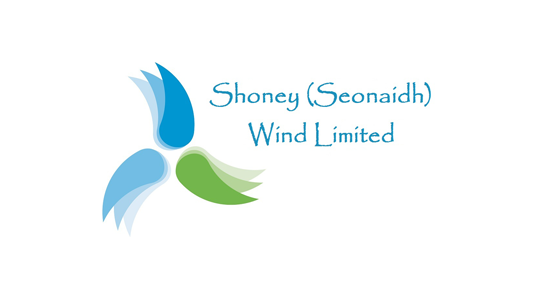Article published in the February Seabird Newsletter comparing breeding
success of urban v coastal kittiwake in Scarborough
A comparison of Kittiwake breeding success at urban and natural coastal colonies in Scarborough.
Nathalie Stevenson (Shoney Wind Ltd), Nick Addey, Katie Hackett and Steven Wignill.
Introduction
Between 2021-2023 Shoney Wind undertook monitoring of Black-legged kittiwake in Scarborough to inform wider studies into kittiwake thermoregulation, nest microclimate and artificial nesting structure designs. We classified Scarborough subplots into two broad categories according to theoretical wind exposure as either a) more wind-exposed natural coastal cliff subplots, or b) more wind-sheltered urban built environment subplots.
Surveys of wind exposed natural coastal cliffs included:
-
- Castle Cliffs ENE subplot (directly exposed to N-NE winds) with a manageable number of circa 100 AON.
- Castle Cliffs SE subplot which is exposed to frequent SE winds (which are typically not as cold as ENE winds) with a manageable number of circa 137 AON.
Surveys of more wind-sheltered urban built environment subplots included:
-
- Spa Bridge located close to the seafront within a bay that is partially sheltered by the Castle Cliffs Headland to the north, has multiple orientations (broadly north, east, south and west) which held 263-270 AON between 2020 and 2022.
- One inland town centre subcolony which had 68 AON in 2020 was surveyed in 2021. In 2022 this subcolony was split into three subplots as the three sets of ledges had different solar exposures. By 2023, six inland town centre locations were surveyed using nine subplots.
The mean productivity of the more wind-sheltered urban built environment sites was 0.88 (SD of 0.08) and the mean productivity of the wind exposed natural coastal cliffs was 0.53 (SD of 0.07). Results were calculated from a total of 1103 urban AON and 575 coastal AON.
We propose that urban coastal sites and inland town centre sites provide nests within the ‘Goldilocks zone of least thermoregulatory stress’ (Stevenson N.J 2022). We hypothesise that urban kittiwake may be utilising a philopatric ‘bet hedging’ strategy which may enable urban kittiwake to retain meta-colony fidelity between breeding seasons but retain nest site location optionality.
In the face of increasing environmental variability, such as heatwave events and summer storms associated with climate change, this bet hedging strategy is likely to be advantageous. Remaining faithful to more homogenous cliff sites with fewer ‘patch choices’ to choose from may be a risky strategy.
We agree with Ruffino, et.al (2020) that individual birds must escape poor local quality ‘patches’ while retaining breeders on higher quality ‘patches’ in order to maintain a long-term total population size during spatial and temporal environmental change. We assert that Scarborough’s urban sub-colonies offer higher quality breeding ‘patches’ than coastal colonies in North Yorkshire.
Please join the Seabird Group to read the full article:
